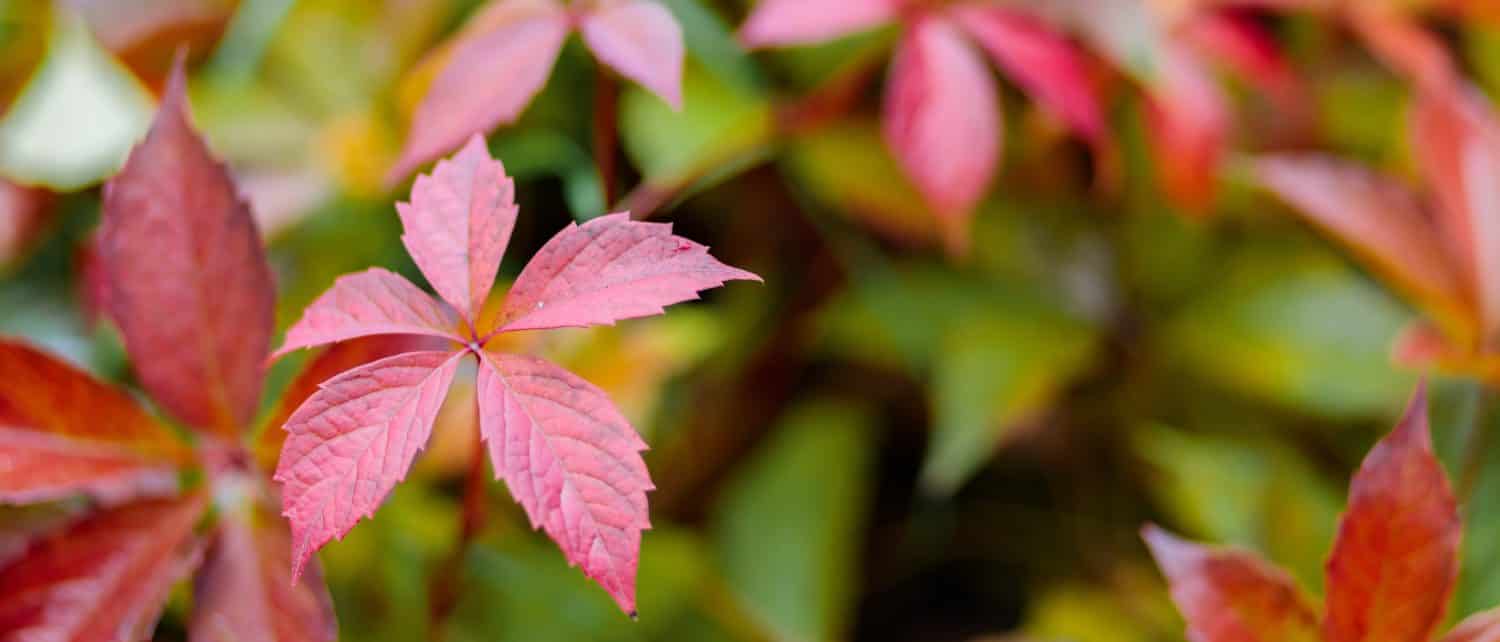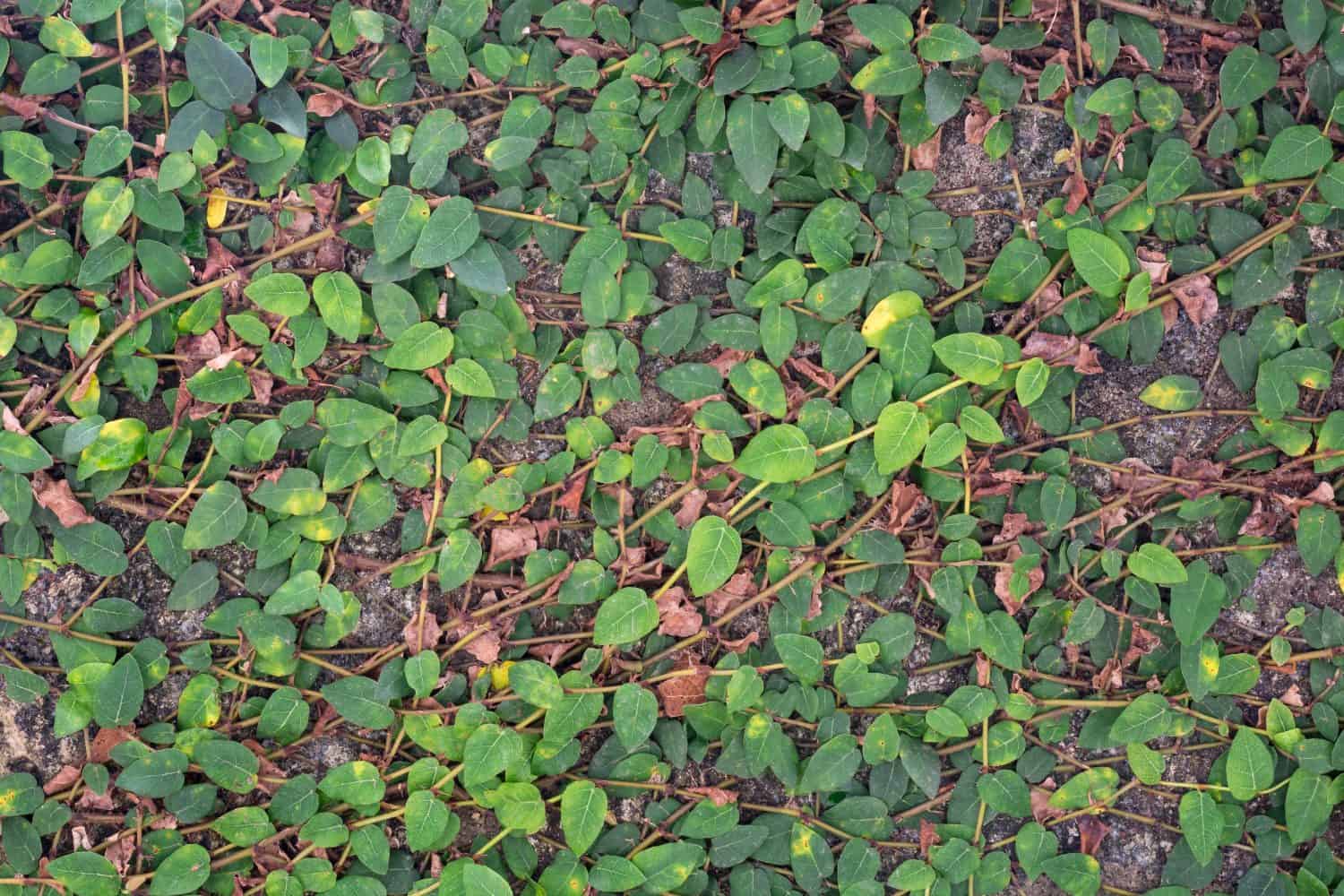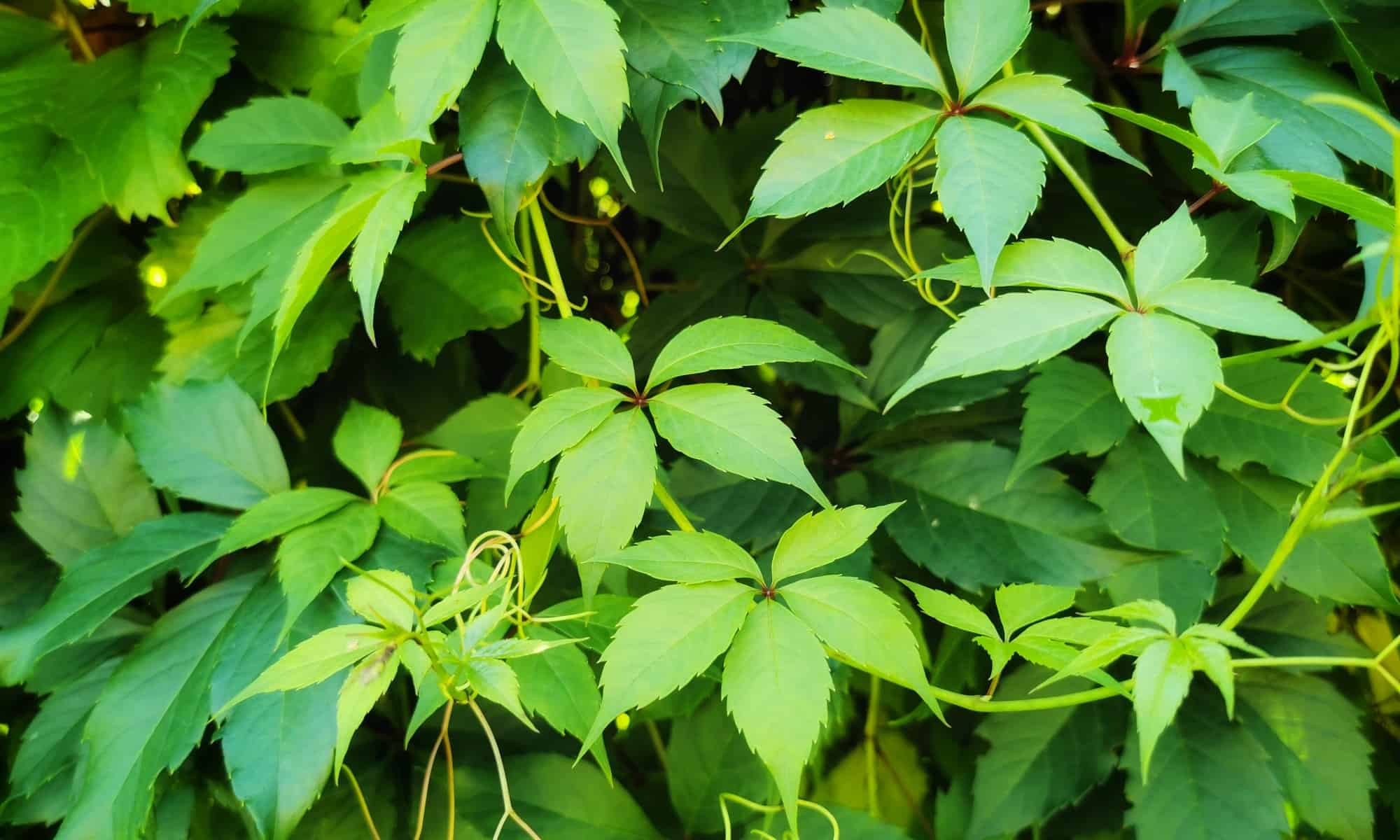Virginia creeper is a fast-growing, native, ivy-like vine. Although it is frequently mistaken for poison ivy or Boston ivy, the Virginia creeper (Parthenocissus quinquefolia) is actually in the Vitaceae or grape family. It provides a nearly carefree, maintenance-free groundcover option in the right landscape conditions.
Although the name says Virginia creeper, these vines can spread up to 20 feet a year, reaching average lengths of 30 to 50 feet. The vines effortlessly spread over the ground but have no problem overtaking rocks, stumps, tree trunks, fences, utility poles, and even houses that stand in their path. The vine is vigorous and fast-growing in the summer and spring. But you may want to discover what happens to Virginia creeper in the winter.

Virginia creeper is hearty and fast growing from spring through fall, but winter brings changes.
©dking108/Shutterstock.com
Leaf Changes Signal Upcoming Winter Dormancy
Virginia creeper is an evergreen, deciduous vine that stays green and temporarily holds its foliage in the colder winter months. In autumn, when the temperatures drop and daylight shortens, the five-lobed compound leaves change to crimson red and yellow. They remain on the vine into the winter, adding beautiful aesthetics to your landscape. Later, the leaves fall to the ground in the coldest part of winter, and the Virginia creeper goes dormant.

Colder temperatures and reduced daylight cause the leaves of a Virginia creeper to change.
©Lazartivan/Shutterstock.com
Prune Virginia Creepers In Winter
Pruning is essential to keep the plant in its desired shape and is done in late winter or early spring while the Virginia creeper is dormant. Left unchecked, their quick growth and disrespect for whatever is in their path can quickly turn a Virginia creeper into a nuisance plant. It becomes overgrown and widespread, strangling and smothering all other nearby plant life.
The roots spread laterally and need regular pruning to contain their spread, especially around other plants, trees, and shrubs. Pruning lateral vines is done at ground level, taking precautions not to harm any other plant life that may already be entangled in the Virginia creeper’s grip.

Ground vines can quickly take over their surroundings if left unchecked.
©Shamils/Shutterstock.com
Tips For Pruning Virginia Creepers in Winter
- Late winter through early spring is the best time for pruning as Virginia creepers go dormant.
- Always use clean, sharp shears, initially removing the dead, diseased, or damaged canes.
- Trim away from the main stem, as it is the primary source of nourishment for the plant.
- Thin out congested areas constricting airflow and blocking out sunlight to other parts of the plant.
- Remove too long or dense canes that cannot be easily managed.
- Always prune just above a healthy bud or stem.
- Leave 3 to 4 healthy buds or stems for new growth.
- Remove the Virginia creepers’ abundant berries to slow and discourage propagation.
- Clean up any fallen or trimmed leaves, as they are a slip-and-trip hazard for those walking on them.

Removing the summer berries of a Virginia creeper will slow propagation.
©Martin Hibberd/Shutterstock.com
Winter is Time For Virginia Creeper Care
The Virginia creeper is self-sufficient and virtually maintenance-free from spring through fall. When you discover what happens to the Virginia creeper in the winter, you realize it’s the perfect time to perform maintenance on the fast-growing vine.
As the leaves change color and the plant falls into dormancy, it is time to trim and prune your plant. Reigning in the plant during its winter dormancy stops it from becoming a nuisance and strangling out other preferred plant life. Winter pruning and trimming help keep its desired shape and reach as a low-maintenance, fast-growing landscape solution to fill hard-to-grow areas and negative spaces.

With proper winter pruning and maintenance, Virginia creeper is an excellent ground cover choice.
©Showtime.photo/Shutterstock.com
Thank you for reading! Have some feedback for us? Contact the AZ Animals editorial team.








